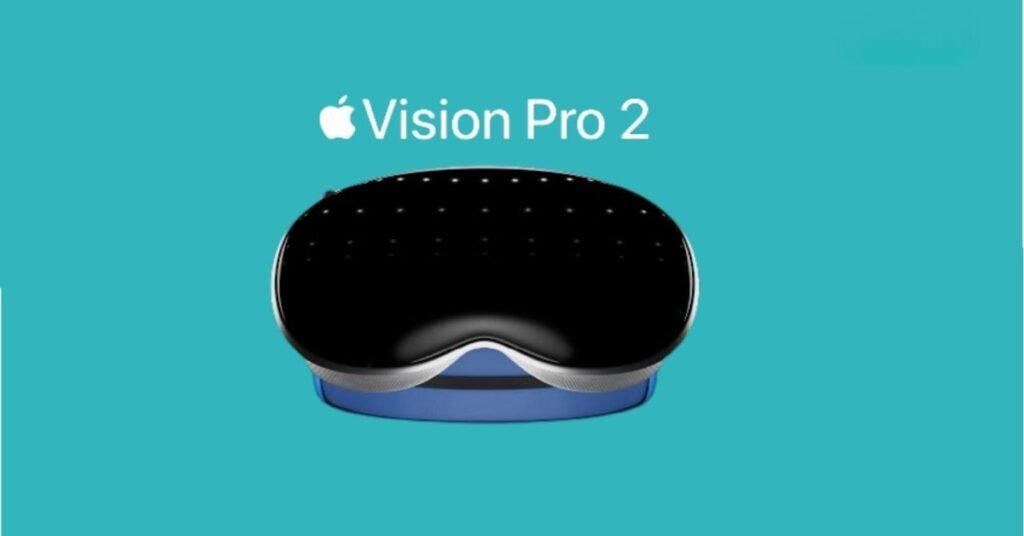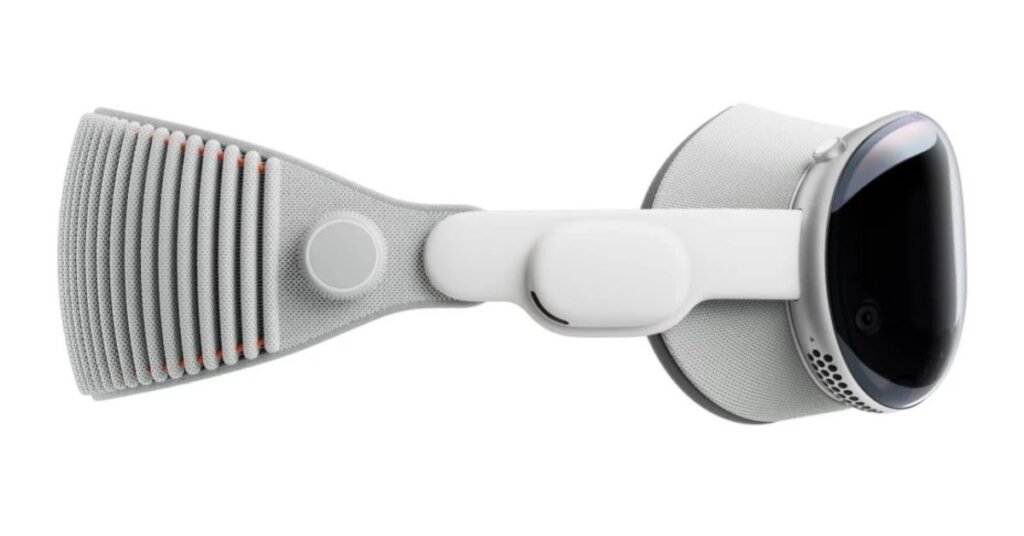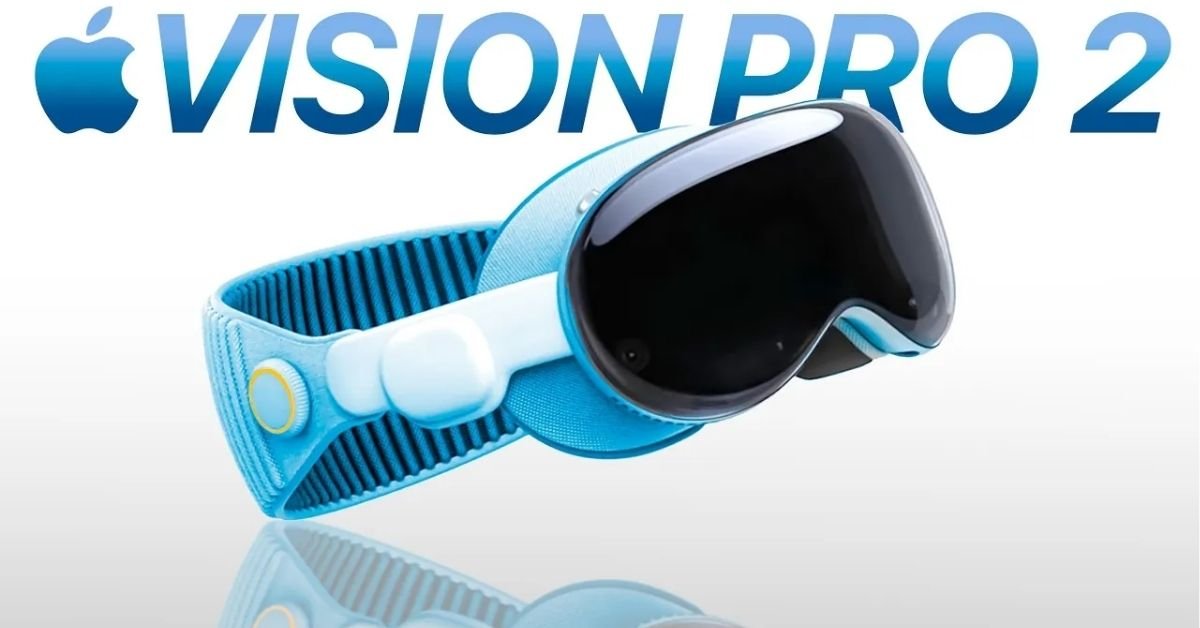The Vision Pro 2 Launch, slated for late 2025 or early 2026, is shaping up to be Apple’s boldest step yet in spatial computing.
Unveiled amidst buzz from sources like Bloomberg’s Mark Gurman and analyst Ming-Chi Kuo, the second-generation mixed reality headset promises a powerful M5 chip, refined visuals, and a bolstered software ecosystem.
Building on the original Vision Pro’s ambitious 2024 debut, this iterative upgrade aims to address performance, comfort, and content gaps while drawing intense interest from AR/VR adopters and developers.
For U.S. tech enthusiasts, the Vision Pro 2 Launch signals a pivotal moment for immersive technology. Here’s what to expect from Apple’s next leap into mixed reality.
M5 Chip: Powering Performance and Efficiency
At the heart of the Vision Pro 2 Launch is the M5 chip, a significant upgrade from the first-gen’s M2 and R1 dual-chip setup.
The M5, expected to debut across Apple’s 2025 lineup, offers a 25% performance boost and improved power efficiency, per MacRumors.
This enables smoother rendering of complex AR environments, reducing lag in apps like 3D design or immersive gaming.

Enhanced thermal management extends battery life beyond the original’s 2.5-hour video playback limit, potentially reaching 3 hours, addressing a key user complaint.
The M5’s advanced Neural Engine also supercharges Apple Intelligence, enabling real-time adjustments in mixed reality, such as adaptive content rendering based on surroundings. For U.S. professionals, this means seamless multitasking in virtual workspaces or fluid VR simulations.
Refined Mixed Reality Experiences
The Vision Pro 2 Launch refines the mixed reality experience with subtle but impactful upgrades. While retaining the original’s sleek aluminum and glass design, Apple introduces a revised head strap for better weight distribution, tackling fatigue reported during long sessions.
The dual Micro-OLED displays, boasting 23 million pixels, may see a density bump to 1,700 pixels per inch, per SimplyMac, for crisper visuals in apps like Spatial Gallery.
Enhanced passthrough cameras improve real-world immersion, blending digital and physical spaces with less distortion.
Eye-tracking and hand-gesture controls are refined for greater precision, making interactions like resizing virtual windows or navigating 3D models feel intuitive. These changes make the Vision Pro 2 a compelling tool for creators and enterprise users in the U.S.
VisionOS and App Ecosystem Upgrades
The Vision Pro 2 Launch coincides with visionOS 3.0, set to be Apple’s most significant software update for spatial computing.
Building on visionOS 2.4’s April 2025 release, which introduced Writing Tools and Genmoji, the new OS enhances productivity with wide and ultrawide display modes, acting as a high-res Mac monitor.
New apps, like an expanded Spatial Gallery for 3D photos and videos, deepen immersion for entertainment and education.
Enterprise-focused tools, such as Deloitte’s Academy for Apple Vision Pro, leverage APIs like RealityKit and ARKit to create custom 3D training modules.
Over 1 million iOS and iPadOS apps remain compatible, with new spatial apps from Microsoft 365 and Slack boosting workplace efficiency. These updates position the Vision Pro 2 as a versatile platform for U.S. users.
Comparing Vision Pro 2 to the Original
The Vision Pro 2 Launch refines rather than reinvents the first-gen Vision Pro. The original, launched in February 2024 at $3,499, dazzled with its Micro-OLED displays and gesture-based interface but faced criticism for its weight, limited battery life, and niche appeal.
The Vision Pro 2 retains the same form factor but swaps the M2 for the M5, boosting performance for multitasking and AI tasks.
A redesigned strap improves comfort, though no major weight reduction is expected. The R1 chip remains for low-latency sensor processing, but enhanced passthrough and display clarity address visual fidelity concerns.
Unlike the original’s limited content ecosystem, visionOS 3.0 and new developer tools promise richer app experiences, making the Vision Pro 2 more practical for everyday use.

Market Reactions and Expectations
U.S. Apple communities are buzzing with anticipation for the Vision Pro 2 Launch. On X, users like Tom Krikorian praised the M5 upgrade, posting, “M5 over M4? Huge win for Vision Pro 2.
Tech reviewers, like The Verge, expect the headset to appeal to professionals in design and healthcare, with Mayo Clinic’s trials showing a 30% reduction in surgical prep time.
However, some on Reddit’s r/Apple question the $3,500 price, unchanged from the original, per PCMag.
Analysts like Ming-Chi Kuo see the M5 and Apple Intelligence as critical for enterprise adoption, though Bloomberg’s Mark Gurman notes a cheaper Vision Air model may not arrive until 2027, limiting mainstream reach. The Vision Pro 2 Launch is generating hype but faces scrutiny over cost and accessibility.
Mainstream Breakthrough or Niche Upgrade?
The Vision Pro 2 Launch positions Apple to refine its spatial computing vision, with the M5 chip, enhanced visuals, and visionOS 3.0 delivering a polished mixed reality experience.
For U.S. professionals in creative, medical, or enterprise fields, the headset’s power and app integration are compelling.
However, the $3,499 price and iterative design may keep it a premium niche product, as seen with the original’s 370,000 units sold globally.
A more affordable Vision Air, slated for 2027, could drive broader adoption. If Apple leverages its developer ecosystem and enterprise pilots, the Vision Pro 2 Launch could pave the way for mainstream mixed reality by proving its value in real-world applications, but cost remains a hurdle in 2025.
Eager for the Vision Pro 2 Launch? Follow Apple’s October 2025 event for the latest on this spatial computing powerhouse.
$AAPL
— Byul (@byul_finance) August 24, 2025
Apple to launch iPhone 17, Vision Pro 2, and AI features in 2025, but faces analyst criticism over AI strategy.
Also Read: Mac Mini M5 Redesign Unveils Compact Powerhouse

Abdul Basit is a US-based tech writer who covers Apple innovations, Tesla’s EV growth, AI breakthroughs, smartphone trends, and app reviews for global readers.
